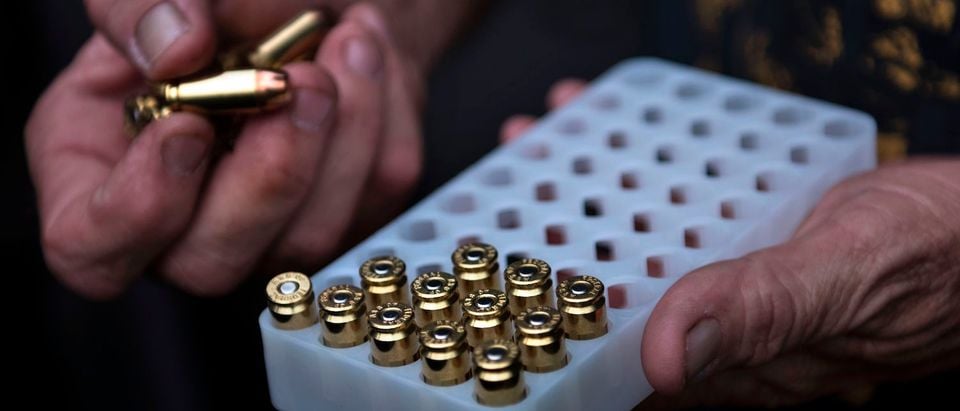By Sam Hoober, Alien Gear Holsters
Obviously, there’s a big ammunition shortage at the moment. You can’t find any in stores, at least for long. What you can find online is in short supply and typically marked up significantly.
It isn’t the first one. The same thing happened during the Obama administration. Everyone was afraid there was going to be a gun ban and so everyone made a run on AR-15s and ammo.
Nothing happened of course; it turns out Barack Obama is the best gun salesman on the planet. The second best was, of course, his attorney general Eric Holder, but that’s a story for another time.
Boom and bust cycles of any commodity are cyclical; demand peaks, reducing supply, then recedes and allows supply to reenter the market and price to return to normal. Therefore, it can be taken as granted that the ammo shortage will eventually end only for another to happen.
Unless, of course, something happens that precludes an ammunition shortage from ever happening again. A drastic change in how ammunition is made, leading to a drastic increase in supply or, at least, faster replacement of it.
Is that possible?
Actually, yes. There is a rather recent development trend at the fringes of the ammunition industry that could drastically mitigate the potential of future shortages. Up to a point of course.
And what is this miracle, you ask? Polymer-cased ammunition. The brass case is replaced by one of reinforced polymer (plastic) designed to withstand the pressures of use as a pistol or rifle cartridge.
Obviously reloading isn’t possible, but the implication is that far more of it can be made in the same amount of time than brass or steel-case.
The idea isn’t new.
Shotgun ammunition switched to plastic hulls in the mid-20th century (shotgun shells had previously been made of paper or, if you were rich, brass) with a brass base and basically became the only game in town for feeding a scattergun.
The idea has also been toyed with when it comes to other centerfire cartridges – specifically pistol and rifle ammunition – but heretofore hasn’t come to full fruition.
Yet.
How close is it though?
Had one to guess, it will probably be a while. Within the decade is possible, but very optimistic.
A few different suppliers have been creating ammunition for testing by the US military, providing polymer-cased ammunition in select calibers (.50 BMG, 7.62x51mm and 6.8mm SPC) with the idea being to reduce weight for transportation and what soldiers have to carry in the field.
Ounces equal pounds, pounds equal pain, after all.
The US Marines were testing polymer-cased .50 BMG ammunition (as well as polymer pallets for transport) by 2017, according to Military.com. The initial tests and development actually started as early as 2010, according to Task and Purpose.
There was a limited release of polymer-cased .308 ammunition around 2014, from a company called PCP Performance Ammo, part of the Gorilla Ammo company. There were some promising results from some users, but also some not-so-promising ones.
Not least of which was two catastrophic case failures which happened to Alex, a writer for The Firearm Blog. The case failures destroyed the magazines of a PTR 91 (an HK G3/G36/CETME rifle) and a FAL.
PCP Ammo had cautioned that they hadn’t tested the ammunition in guns with fluted chambers (the G3 has a fluted chamber) but that it was otherwise safe to use in semi-auto rifles. The FAL, it must be noted, does not have a fluted chamber, but the issue there is that both are very, very common rifles in that chambering.
So it still has some ways to go in terms of being ready for use. The military is hoping to have in service by 2023 at the latest.
Eventually, that will trickle down to civilian production and sale, but here’s where this starts to become a titillating prospect for more abundant ammunition.
One of the ammunition companies producing polymer cased ammo for the military, True Velocity, told Guns And Ammo that their production capacity was about 30 million rounds per year with just 2500 square feet of factory space.
That’s not much bigger than the average house.
Granted, that’s nothing compared to the actually BIG ammo plants. Remington’s ammunition plant in Lonoke – soon to resume production, in fact – can produce about 10 million rounds per month, meaning more than 4 times True Velocities’ supposed production capacity…but does so with 750,000 square feet of factory space, according to the Arkansas Democrat Gazette.
And that is, be in no doubt, one of the largest ammunition factories in the United States.
Of course, this is all academic until production for sale on the civilian market actually happens, which it hasn’t yet. However – once it does – it’s possible that ammunition shortages won’t be as bad.
Click here to get your 1911 Pistol Shopping Guide.
Click here to get The Complete Concealed Carry Training Guide
Sam Hoober is a Contributing Editor to AlienGearHolsters.com, a subsidiary of Hayden, ID, based Tedder Industries, where he writes about gun accessories, gun safety, open and concealed carry tips. Click here to visit aliengearholsters.com.


